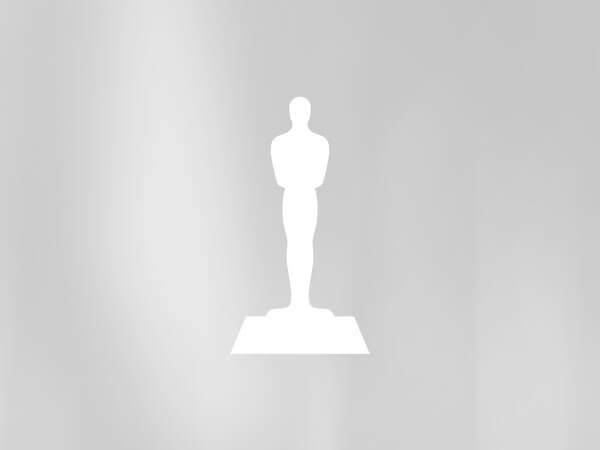Honorees from the 2025 Sci-Tech Awards share special messages to those who helped them along the way in their professional and personal life
Marlee Matlin accepts the Academy Award of Merit for Captioning
Co-Chair of the Scientific and Technical Awards Committee Darin Grant reflects on the Sci-Tech Awards recipients
TECHNICAL ACHIEVEMENT AWARDS
To Essex Edwards, James Jacobs, Jernej Barbic, Crawford Doran and Andrew van Straten for the design and development of Ziva VFX.
Ziva VFX is a system for constructing and simulating muscles, fat, fascia, and skin for digital characters. An artist-friendly interface that emphasizes easily understood physical metaphors, coupled with a robust, physically accurate solver, has enabled a broad range of studios to bring visually rich creatures to life.
To Javor Kalojanov and Kimball Thurston for the creation of Wētā FX’s ML Denoiser.
This denoiser prioritizes temporal filtering using innovative optical flow techniques to preserve crucial details. Novel training strategies allow its machine learning algorithms to denoise computer-generated imagery to the most exacting standards.
To Neeme Vaino for the development of Fireskin360 Naked Burn Gel.
This widely available gel allows longer targeted burns directly on the skin, broadening the range of fire stunts performed across the industry.
To Dustin Brooks and Colin Decker for the development of naked burn gel.
Fire for Hire’s gel first publicly demonstrated a “naked burn,” where fire appears directly on the skin, enabling a new form of safe fire stunts in motion pictures.
To Attila T. Áfra for the creation of Intel Open Image Denoise, and to Timo Aila for his pioneering work at NVIDIA applying U-Nets to denoising.
Open Image Denoise is an open-source library that provides an elegant API and runs on diverse hardware, leading to broad industry adoption. Its core technology is provided by the widely adopted U-Net architecture that improves efficiency and preserves detail, raising the quality of CG imagery across the industry.
To Mark Noel for adapting and enhancing the safety and reliability of transportable six-degrees-of-freedom motion base technology for motion picture use.
The NACMO series of modular motion bases enables filmmakers to dynamically control simulated actions, providing precise movements, enhancing special effects, and enriching the visual experience for audiences worldwide.
To Su Tie for the development of the sensor analysis and stabilization software, to Bei Shimeng for the electrical engineering, and to Zhao Yanchong for the mechanical design and engineering of the Ronin 2 gimbal system.
Utilizing three-axis stabilization through multiple sensors, the DJI Ronin 2 has achieved broad adoption. It is controllable from a diverse set of input devices, enabling filmmakers to create complex, dynamic camera moves.
To Tabb Firchau for the conception and development, to John Ellison and Steve Webb for the attitude control system, to David Bloomfield for the motor design, and to Shane Colton for the motor driver system design of the Mōvi gimbals.
Freefly Systems’ introduction of handheld stabilized gimbals provides single-person or collaborative remote camera operation with various controllers, enabling previously difficult shots without dolly or crane-supported stabilized heads.
SCIENTIFIC AND ENGINEERING AWARDS
To Jayson Dumenigo for the development of the Action Factory Hydrogels.
Action Factory hydrogels are engineered to allow longer burns at higher temperatures with quick turnaround times, increasing the safety and efficiency of fire stunt performances.
To Thijs Vogels, Fabrice Rousselle, David Adler, Gerhard Röthlin and Mark Meyer for the creation of Disney’s ML Denoiser.
This sophisticated machine learning denoiser features a ground-breaking kernel-predicting convolutional network and temporal stability. It has been adopted far beyond its original domain of animation and is an essential tool for creating computer-generated imagery in feature films.
To Nir Averbuch, Yair Chuchem and Dan Raviv for the concept, design and development of the Auto Align Post 2.
Sound Radix’s Auto Align Post 2 allows the seamless blending of multiple moving microphones during film post-production, eliminating phase distortion, saving significant time over manual alignment methods and raising the reproduction quality of dialogue recorded on set.
To Curt Schaller for the concept, design and development of the Trinity 2 system, and to Dr. Roman Foltyn for the software and hardware design of its motorized stabilized head.
The ARRI Trinity 2 is a body-worn system that combines a traditional inertial camera stabilization system with electronic gimbal technology, allowing unprecedented freedom of camera movement for acquiring shots with multiple transitions that are otherwise unobtainable.
To Steve Wagner for the initial concept and software, to Garrett Brown for the design, and to Jerry Holway and Robert Orf for the engineering of the Steadicam Volt stabilization system.
The Tiffen Steadicam Volt revolutionizes inertial stabilization with its advanced two-axis motorized design, creating artificial inertia and simulated friction while providing adjustable tactile feedback. Different modes allow the operator to alter the physical feel of the rig. The Volt empowers filmmakers to achieve dynamic shots with more complex camera movement while maintaining a stable roll axis.
To Dave Freeth for the design, engineering and development of the hand-held Stabileye three-axis motorized camera stabilization system.
The compact size and live adjustment of operating parameters of these devices facilitate subtle and dynamic camera moves closer to actors, and in tighter quarters than previously possible. Its low latency allows for instinctive operation whether controlled by a single operator or remotely.
ACADEMY AWARD OF MERIT® (OSCAR® STATUETTE)
To all those who have developed and supported captioning technology, whether open or closed, for film.





